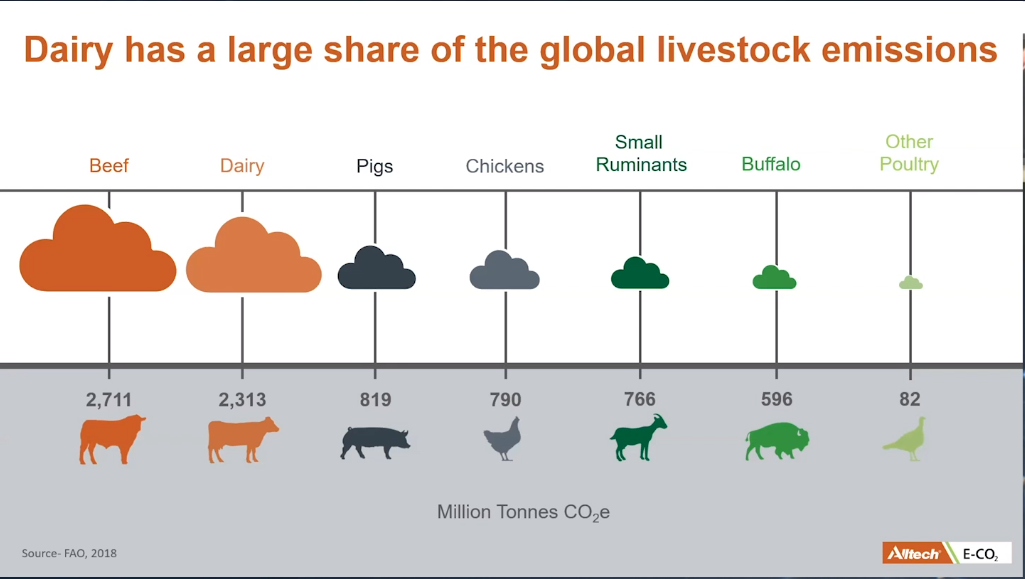The dairy sector is at a crossroad, with a need for optimising production while reducing carbon emissions, according to Dr. Saheed Salami.
Dr. Salami was speaking at the Alltech ONE event, his presentation ‘Higher milk production, lower carbon hoofprint’, outlined that global dairy production is expected to increase by 35% between 2017 and 2030.
South Asia is expected to experience the largest growth of 64%, while western Europe will see an increase of 14%, but reducing emissions from the sector is also required.

Crossroad of sustainability
Dr. Salami explained that ”globally, the dairy sector is at a crossroad, with growing demand for dairy products, while resources such as land availability for production becomes limited.
”Milk producers are also experiencing declining profits, mainly due to the increasing cost of inputs.
“Producers are also being forced to adhere to stricter environmental regulations – including the reduction of Green House Gases (GHG) produced from the sector.
”The sector is also experiencing a change in consumer trends, with consumers wanting more transparency, in terms of where their milk has come from and how it has been produced.”
Dairy emissions
Dr. Salami explained that dairy is the “second largest source of agricultural GHG emissions with 2,313 million/t of co2, with the pig production being in third with only 819 million/t of co2”.
The sector producing the largest amount of emissions is the beef sector – with 2,711 million/t of co2 produced annually.

Dr. Salami then explained that: ”Enteric emissions (methane from the rumen) contributed 39% of these emissions, with production of feed for the animals contributing a further 22%.
”With the reduction of these emissions helping to reduce the overall GHG emissions produced by the dairy sector.”

Reducing carbon
Dr. Salami explained that: ”Increased production is possible while also reducing carbon emissions, and that the pathway is through increased feed digestibility and reducing the use of high-carbon protein ingredients such as soya in animal feed.
”The sector will need to better utilise nitrogen in the feed and produce less GHG emission/kg of milk.
”Overall, the message is [that] we need to optimise our production while reducing the GHG emissions being produced by the sector.
”With the role of rumen nutrition playing a major role in the reduction of emissions from the sector, while increasing production efficiencies.”
